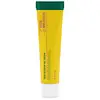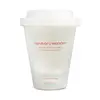What's inside
What's inside
 Key Ingredients
Key Ingredients

 Benefits
Benefits

 Concerns
Concerns

No concerns
 Ingredients Side-by-side
Ingredients Side-by-side

Water
Skin ConditioningCitrus Junos Fruit Water
MaskingPropanediol
SolventDiheptyl Succinate
EmollientAmmonium Acryloyldimethyltaurate/Vp Copolymer
1,2-Hexanediol
Skin ConditioningCaprylyl Glyceryl Ether
CleansingSalicylic Acid
MaskingGlycerin
HumectantTromethamine
BufferingButylene Glycol
HumectantCitrus Junos Seed Extract
AntioxidantCaprylhydroxamic Acid
Bisabolol
MaskingCamellia Sinensis Seed Oil
HumectantPunica Granatum Seed Oil
EmollientAllantoin
Skin ConditioningVitis Vinifera Seed Oil
EmollientCentella Asiatica Extract
CleansingCapryloyl Glycerin/Sebacic Acid Copolymer
Skin ConditioningGlycyrrhiza Glabra Root Extract
BleachingLilium Candidum Bulb Extract
Skin ConditioningCamellia Sinensis Leaf Extract
AntimicrobialWater, Citrus Junos Fruit Water, Propanediol, Diheptyl Succinate, Ammonium Acryloyldimethyltaurate/Vp Copolymer, 1,2-Hexanediol, Caprylyl Glyceryl Ether, Salicylic Acid, Glycerin, Tromethamine, Butylene Glycol, Citrus Junos Seed Extract, Caprylhydroxamic Acid, Bisabolol, Camellia Sinensis Seed Oil, Punica Granatum Seed Oil, Allantoin, Vitis Vinifera Seed Oil, Centella Asiatica Extract, Capryloyl Glycerin/Sebacic Acid Copolymer, Glycyrrhiza Glabra Root Extract, Lilium Candidum Bulb Extract, Camellia Sinensis Leaf Extract
Water
Skin ConditioningNiacinamide 5%
SmoothingPropanediol
SolventCentella Asiatica Leaf Water 3.8%
Skin ConditioningGlycerin
HumectantButylene Glycol Dicaprylate/Dicaprate
EmollientSqualane 2%
Emollient1,2-Hexanediol
Skin ConditioningCetearyl Olivate
Panthenol
Skin ConditioningAmmonium Acryloyldimethyltaurate/Vp Copolymer
Sorbitan Olivate
EmulsifyingCarbomer
Emulsion StabilisingSclerotium Gum
Emulsion StabilisingTromethamine
BufferingHelianthus Annuus Seed Oil
EmollientXanthan Gum
EmulsifyingMadecassoside
AntioxidantEthylhexylglycerin
Skin ConditioningDisodium EDTA
Xylitol
HumectantAscorbic Acid
AntioxidantWater, Niacinamide 5%, Propanediol, Centella Asiatica Leaf Water 3.8%, Glycerin, Butylene Glycol Dicaprylate/Dicaprate, Squalane 2%, 1,2-Hexanediol, Cetearyl Olivate, Panthenol, Ammonium Acryloyldimethyltaurate/Vp Copolymer, Sorbitan Olivate, Carbomer, Sclerotium Gum, Tromethamine, Helianthus Annuus Seed Oil, Xanthan Gum, Madecassoside, Ethylhexylglycerin, Disodium EDTA, Xylitol, Ascorbic Acid
 Reviews
Reviews

Ingredients Explained
These ingredients are found in both products.
Ingredients higher up in an ingredient list are typically present in a larger amount.
1,2-Hexanediol is a synthetic liquid and another multi-functional powerhouse.
It is a:
- Humectant, drawing moisture into the skin
- Emollient, helping to soften skin
- Solvent, dispersing and stabilizing formulas
- Preservative booster, enhancing the antimicrobial activity of other preservatives
Ammonium Acryloyldimethyltaurate/Vp Copolymer (let's call it AAVC for short) is a synthetically created polymer. It's used as a film-forming agent and used to thicken the consistency of products.
AAVC is able to increase the consistency and viscosity of products due to its large molecule size. It also prevents ingredients from separating.
Glycerin is already naturally found in your skin. It helps moisturize and protect your skin.
A study from 2016 found glycerin to be more effective as a humectant than AHAs and hyaluronic acid.
As a humectant, it helps the skin stay hydrated by pulling moisture to your skin. The low molecular weight of glycerin allows it to pull moisture into the deeper layers of your skin.
Hydrated skin improves your skin barrier; Your skin barrier helps protect against irritants and bacteria.
Glycerin has also been found to have antimicrobial and antiviral properties. Due to these properties, glycerin is often used in wound and burn treatments.
In cosmetics, glycerin is usually derived from plants such as soybean or palm. However, it can also be sourced from animals, such as tallow or animal fat.
This ingredient is organic, colorless, odorless, and non-toxic.
Glycerin is the name for this ingredient in American English. British English uses Glycerol/Glycerine.
Learn more about GlycerinPropanediol is an all-star ingredient. It softens, hydrates, and smooths the skin.
It’s often used to:
Propanediol is not likely to cause sensitivity and considered safe to use. It is derived from corn or petroleum with a clear color and no scent.
Learn more about PropanediolTromethamine helps balance the pH and improve the texture of a product. It is synthetically created.
As an emulsifier, Tromethamine prevents oil and water ingredients from separating. This helps stabilize the product and elongate a product's shelf life. Tromethamine also makes a product thicker.
Tromethamine helps balance the pH level of a product. Normal pH level of skin is slightly acidic (~4.75-5.5). The acidity of our skin is maintained by our glands and skin biome. Being slightly acidic allows our skin to create an "acid mantle". This acid mantle is a thin barrier that protects our skin from bacteria and contaminants.
Oral Tromethanmine is an anti-inflammatory drug but plays the role of masking, adding fragrance, and/or balancing pH in skincare.
1,3-Propanediol, 2-amino-2-(hydroxymethyl)-
Learn more about TromethamineWater. It's the most common cosmetic ingredient of all. You'll usually see it at the top of ingredient lists, meaning that it makes up the largest part of the product.
So why is it so popular? Water most often acts as a solvent - this means that it helps dissolve other ingredients into the formulation.
You'll also recognize water as that liquid we all need to stay alive. If you see this, drink a glass of water. Stay hydrated!
Learn more about Water